Testimonials By Sanee
Ella tour with my Clients.

Ella is a small town in the Badulla District of Uva Province, Sri Lanka governed by an Urban Council. It is approximately 200 kilometres east of Colombo and is situated at an elevation of 1,041 metres above sea level.There are two railway stations ella railway station and kitalella railway station with nice and beautifull natural scenaries.
There are few attractions
Dhowa temple, a 2,000-year-old rock temple, is located on the Badulla-Bandarawela Road. It contains a 12 metres (39 ft) unfinished Buddha statue carved into the surrounding rock.
Bambaragala Peak
Ella Rock
Little Adam's Peak
Ravana Ella Falls
Nine Arches Bridge, Demodara.
Ella beautifull location.
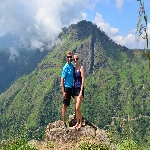
The views through Ella Gap are stunning, and on a clear night you can even spy the subtle glow of the Great Basses lighthouse on Sri Lanka's south coast.
While soft-sand beaches and lowland jungles may be the first images that leap to mind when you imagine Sri Lanka, this tropical isle is endowed with a mountainous interior that is every bit as scenic as the coast, blessed by pleasantly cool temperatures that rarely tip 21ºC.
Season in Sri Lanka Ella
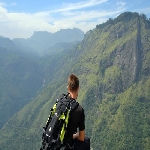
Rising at dawn is the best way to see this region of Sri Lanka burst into life, as the rising sun spills across lush and sweeping amphitheaters of green, and views stretch to the horizon, undimmed by early mists and the clouds that roll in mid-morning, obscuring famous vistas.
On the southern slopes of the Hill Country, the towns of Haputale, Bandarawela and Ella are surrounded by a blanket of vast, eye-pleasing tea estates, where swirls of planted tea bushes are stamped onto the landscape like colossal green fingerprints. It's truly delightful hiking territory, criss-crossed by trails that serve up some of Sri Lanka’s best views.
Alternate Worlds End
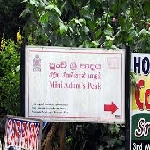
The most famous Hill Country panorama is the evocatively-named World’s End in Horton Plains National Park, but the sublime views come with crowds and high national park entry fees that can exceed US$20 for foreign visitors.
Luckily, Sri Lanka offers a series of alternative World’s Ends, reached by stunning hikes through similarly spectacular natural scenery, but without the crowds and high entry fees – most are free to visit, and even Lipton’s Seat, perhaps the best known, has a modest entry fee of just Rs 50 (US$0.33).
Tasting Liptons delight.
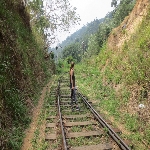
For my own explorations of Sri Lanka’s lush, green hills, I chose the ridge-top town of Haputale, jumping-off point for an early morning ramble to Lipton’s Seat. From this lofty perch above the Dambetenne tea estate, tea’s most famous patron, the English trader Sir Thomas Lipton, once surveyed his vast Ceylonese holdings.
My first stop on the journey was the Dambatenne tea factory – Sri Lanka’s first, founded by Sir Thomas in 1890. Reached via a rewarding 11km walk or short bus or tuk-tuk ride from Haputale, the Dambatenne estate marks the start of a 7km track that climbs 400m through luxuriant tea bush landscapes to Lipton’s eponymous lookout.
Despite the topography, I found the walk restful rather than strenuous; two hours of weaving through rolling plantations, alive with fluttering butterflies and dotted with plantation workers’ homes and groups of Tamil tea pickers, usually chest-deep amidst the bushes, filling bags or baskets with Sri Lanka’s best leaves.
Waving and smiling at tea-pickers earned a warm response, as did my requests for directions. The latter is definitely advised if you plan to tackle the steep, stepped shortcuts running directly through the plantations. At the top of the climb, I found a bronze statue of Sir Thomas Lipton posing with a cuppa in front of a cascade of misty green hills, a small teashop serving fresh brews and treats, and little else to disturb the serenity.
Other top-notch walks
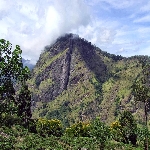
Lipton’s Seat is only one of many wonderful walking destinations in Sri Lanka’s Hill Country. Here are some more recommendations for ways to soak up the scenery and bask in the balmy highland climate.
Pilkington Point & Millennium Point
Start: Bandarawela
Duration: four hours roundtrip
Named after Sir George Pilkington, a 19th-century English tea pioneer, Pilkington Point (about 1400m above sea level) is marked by a simple hut, erected on the spot where Sir George is said to have paused to admire the sprawling extents of the Poonagala tea estate, and a century-old, painted stone signboard identifying local landmarks.
Pilkington Point is a one-hour walk (about 1½km) up a marked trail, forking off the Bandarawela-Koslanda road. If you still have energy to spare, a signed path climbs vigorously onwards for another 45 minutes to Millennium Point, one of the highest lookouts in the highlands at 1500m. The platform at the top has been slowly deteriorating, so be careful, and be wary of wild elephants and boars, especially in the evening.
Ella Rock
Start: Ella
Duration: four hours roundtrip
Reaching the exposed crag jutting out from the west side of Ella Gap involves a steep and challenging walk, starting on the railway tracks toward Bandarawela. After about 2½ km, a dirt trail turns sharply left – it's beyond the metal bridge and Kithalella train station but before the 166¼km marker (a faded blue arrow painted on a boulder shows the way). After leaving the railway, it’s just uninterrupted nature all the way to the top of the rock. The final stretch is the steepest, but the views are their own reward. For an easier excursion, a two-hour roundtrip from Ella will take you as far as Little Adam’s Peak, a lower promontory to the east.
Pinnawala Elephant Orphanage tour.
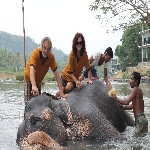
The Pinnawala Elephant Orphanage was established by the Sri Lankan Department of Wildlife Conservation in 1975 for feeding and providing care and sanctuary to orphaned baby elephants that were found in the wild. The orphanage was located at the Wilpattu National Park, then shifted to the tourist complex at Bentota and then to the Dehiwala Zoo. From the Zoo it was shifted to Pinnawala village on a 25-acre (10 ha) coconut plantation adjacent to the Maha Oya River.
The primary residential care area is on the east side of Highway B199, Rambukkana Road. The main site also has some restaurants and refreshment stands, and management buildings including sleeping sheds and veterinary facilities. The elephant bathing and viewing area along the Oya River is directly opposite on the west side of the highway.
At the time it was settled, the orphanage had five baby elephants which formed its nucleus. The addition of orphans continued till 1995 when the Elephant Transit Home (ETH) adjoining Udawalawe National Park was created by the DWC. Since then, orphaned babies have been taken to the ETH and addition to the Pinnawala herd has been mostly through births occurring there.
It was planned for the facility to attract local and foreign visitors, the income from which would help to maintain the orphanage. The Pinnawala Orphanage has since become a tourist attraction. In 1978, the orphanage was taken over by the Department of National Zoological Gardens Sri Lanka. In 1982 an elephant breeding program was launched. As of 2012, there were 78 elephants living here.
Tourists can observe the bathing elephants from the broad river bank as the herd interacts socially, bathing and playing. The orphanage is open to the public daily, and all admission fees are used to look after the elephants.[citation needed] Visitors to the park can view the care and daily routine of the elephants, such as bottle feeding of elephant calves, feeding of all other elephants, and bathing in the Ma Oya (River).
Little Adams Peak tour.
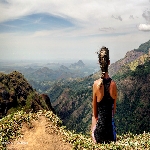
Ella in Sri Lanka is a very well known worldwide for it’s breathtaking view and scenery, Little Adam’s Peak is just one of it. The eye catching, jaw dropping and conspicuous peak is the one not to miss, Situated in Ella, Sri Lanka, it has been attracting tourists for a long time now. The reason for its popularity is the amazing view that never fails to attract and impress the visitors.
It may be a long journey, but it helps the travellers interact with nature in a different way. Little Adam’s Peak is visited mainly because of the great hiking experience it gives to its climbers. It never falls short of beauty. It is filled with greenery and beautiful trees and plants. Resorts and hotels have been built to serve the climbers that may be tired after the long walk. The walk may be long, but once one reaches the top, it is just worth the struggle. The path is straight making the walk less complicated.
After the walk is over, the visitors witness the great view from the top of the mountain. It gives a perfect and clear view of the city of Ella. The view looks even more amazing when the clouds start to roll in. Good weather is a cherry on the top to the view. The sunsets are not to be missed. The blazing and crimson sunsets are a treat to watch.
Little Adams peak at Ella has received positive reviews and that is because it never fails the tourists and visitors. It is highly recommended to people who plan to explore and witness the wonders of Sri Lanka.
Dalada Maligawa.
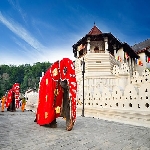
Main article: Relic of the tooth of the Buddha
After the parinirvana of Gautama Buddha, the tooth relic was preserved in Kalinga and smuggled to the island by Princess Hemamali and her husband, Prince Dantha on the instructions of her father King Guhasiva. They landed in the island in Lankapattana during the reign of Sirimeghavanna of Anuradhapura (301-328) and handed over the tooth relic. The king enshrined it Meghagiri Vihara (present day Isurumuniya) in Anuradhapura. Safeguard of the relic was a responsibility of the monarch, therefore over the years the custodianship of relic became to symbolize the right to rule. Therefore, reigning monarchs built the tooth relic temples quite close to their royal residences, as was the case during the times of the Anuradhapura Kingdom, Kingdom of Polonnaruwa, and Kingdom of Dambadeniya. During the era of the Kingdom of Gampola, the relic was housed in Niyamgampaya Vihara. It is reported in the messenger poems such as Hamsa, Gira, and Selalihini that the temple of tooth relic was situated within the city of Sri Jayawardenepura Kotte when the Kingdom of Kotte was established there.
During the reign of Dharmapala of Kotte, the relic was kept hidden in Delgamuwa Vihara, Ratnapura, in a grinding stone. It was brought to Kandy by Hiripitiye Diyawadana Rala and Devanagala Rathnalankara Thera. King Vimaladharmasuriya I built a two-storey building to deposit the tooth relic and the building is now gone. In 1603 when the Portuguese invaded Kandy, it was carried to Meda Mahanuwara in Dumbara. It was recovered in the time of Rajasinha II and it has been reported that he reinstate the original building or has built a new temple. The present day temple of the tooth was built by Vira Narendra Sinha. The octagonal Pattirippuwa and moat was added during the reign of Sri Vikrama Rajasinha. The royal architect Devendra Moolacharya is credited with building the Pattirippuwa. Originally it was used by the king for recreational activities and later it was offered to the tooth relic, it now houses the temple's library.
The temple has been attacked on two occasions, in in 1989 by the Janatha Vimukthi Peramuna and then in 1998 by the militant organization Liberation Tigers of Tamil Eelam.
Relaxing Unawatuna.
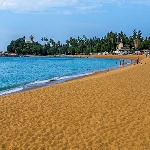
Unawatuna is a coastal town in Galle district of Sri Lanka. Unawatuna is a major tourist attraction in Sri Lanka and famous for its beautiful beach and corals. It is a suburb of Galle, about 5 kilometres (3.1 mi) southeast to the city center and approximately 108 kilometres (67 mi) south of Colombo. Unawatuna is situated at an elevation of 5 metres (16 ft) above the sea level.
From Ramayana
The description of the beach paradises in Valmiki's epic Ramayana sounds like Unawatuna.
"a seashore dotted with thousands of trees, coconuts, and palms dominating, strings of houses and hermitages along the coastline, human beings and superior beings such as Gandharvas, Siddhas, and ascetics, living in them and countless bejewelled celestial nymphs thronging the shore, the coast intermittently visited by heavenly beings, Gods and demons.":
Unawatuna traces its roots to the great epic Ramayana. In the epic, the monkey-warrior Hanuman was sent back to India to fetch the four medicinal herbs by Jambavan namely, mritasanjeevani, vishalyakarani, suvarnakarani, and sandhani from the Himalayas in order to heal Lakshman who was wounded trying to save the abducted Princess Sita from the demon king Ravana. Hanuman failed to identify these herbs, so he lifted the entire mountain and carried it to the battlefield to try to save Lakshman, but in the process, a chunk of it "fell-down" in the location of the present day Unawatuna, the name of the village derives from "Una-watuna" meaning "fell down".
Currently, an edifice is being built in honour of Hanuman on the harbour end of Rumassala Hill by Japanese monks of the Mahayana sect of Buddhism near the Peace Pagoda that they built.
Alternate mythology
A banished Indian Prince was shipwrecked and the Goddess of Earth, Manimekalai, taking pity created a rocky shelf for him to save his life and that subsequently he headed to Unawatuna. The Goddess of Chastity, Pattini, created a wall of fire to prevent him coming ashore, but being a person of some supreme power, he set in motion a tsunami with his foot to extinguish the fire and set foot on the shores of Unawatuna.
It is said that he lived in Unawatuna and helped the people in various ways. Over the years he has been venerated and worshiped, and the Kovil (or Devalaya) on the west end point of the bay which has a history of over a thousand years is believed to be the abode of this Devol deity.
Dagaba
In later years a Buduge, or House of Buddha, and the Swethamalee Chaitiya, or Dagaba, was built on the hillock abutting the Devalaya, or House of Gods. Thousands of pilgrims throng to this place of worship every month of Esala to offer poojas. This festival is a new rice offering so most cultivators bring a share of their crop and pray for timely rain and plentiful harvest. Some others save a fistful of rice from their daily meal and offer that rice, still others would purchase a few measures or even full gunnies of rice along with coconuts to offer.
This rice is pounded and mixed with coconut milk and treacle and made into a porridge which is then offered to the deities at the devalaya and given as alms to thousands of devotees who will trek to the devalaya for this alms giving or Maha Deva Dana or Kiri Dana. Fisher folk save and offer part of their earnings called "Goda kotasa" seeking protection on their forays into the ocean.
Colonial period
After defeating the Portuguese at the Fort of Negombo, the Dutch sailed south and landed on Unawatuna in 1640 and marched to Galle. The Portuguese had encountered the Dutch soldiers at Magalle (where Closenburg Hotel is now located), and fierce fighting took place there. Over 400 Dutch soldiers were killed, and only 49 Portuguese could manage to get back to their fortification in Galle, where they were held in siege for four days before they surrendered.
The Dutch built houses for their officials in Unawatuna. These constructions include the Nooit Gedacht hotel, Unawatuna Hospital and the mansion Maharambe. UBR hotel is situated on a land called Parangiyawatta, meaning "land of the Portuguese", and the area nearby is known as Ja-kotuwa, suggesting that it was the settlement of Ja or Javanese people better known as Hollanders and there may have been some fortification.
The Galle tower or Edwards Pillar in Rumassala Hill is believed to have been a fake lighthouse built during World War I, and the area is shown as property of the British Admiralty in old survey maps.
Unawatuna is rich in its biodiversity. Unfortunately, its greatest potential attraction for eco-tourism was the marsh land or mangrove called Kadolana which was partially destroyed, dredged and filled up to build a chain hotel which never got off the ground. Many locals believe it to have been cursed for being built at the doorstep of the Wella Devalaya.
Over sixty species of endemic birds, including terns, egrets, herons, sandpipers and kingfishers, as well as rarer species such as the lesser whistling duck, the Asian palm swift, the white-breasted waterhen, the Loten's sunbird and the black bittern have been sighted in the locality by the ornithologist, Clive Byers. These birds are mostly sighted in the remaining marshy area and Rumassala Hillock.
Off the coast of Unawatuna, beneath the Indian Ocean lies a number of coral reefs, shipwrecks, and a great variety of fish and turtles. The turtles still wade onto the shore to lay their nests and eggs, and at times, as if to lay first claim to the sandy shore now invaded by the tourists and dotted by restaurateurs, even go right into the beach front restaurants .
The Rumassala coral reefs at the east end of the Galle Harbor attract divers, but are now endangered due to possible port development. Eco treks in the shrub jungles of Rumassala are also available.
The 2004 Indian Ocean tsunami swept away many beach front restaurants and has devastated the sandy beach to a great extent, marring the natural beauty of what was once claimed to be one of the twelve best beaches in the world. It is still considered to be one of the best 100 beaches of the world.
The Department of Coast Conservation was hard pressed to implement a coastal resources management plan under the Asian Development Bank plan[citation needed], but did not spring into action on the aftermath of the tsunami[citation needed]. The Tourism authorities or Urban Development Authority have not yet[timeframe?] taken action in regard to this issue.
Beginning on December 14, 2011, many illegal structures were cleared from the beachfront.
Recent human activities have destroyed almost all the beautiful and long beach lines, a breakwater that was constructed has disrupted the natural flow of the currents and has destroyed the beautiful coral reef too.


